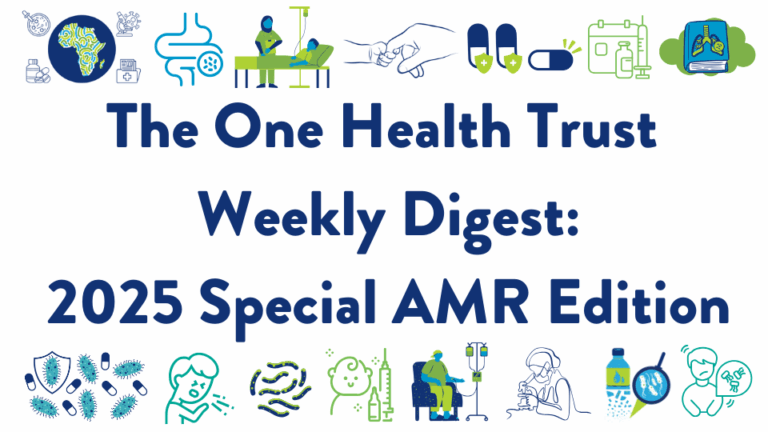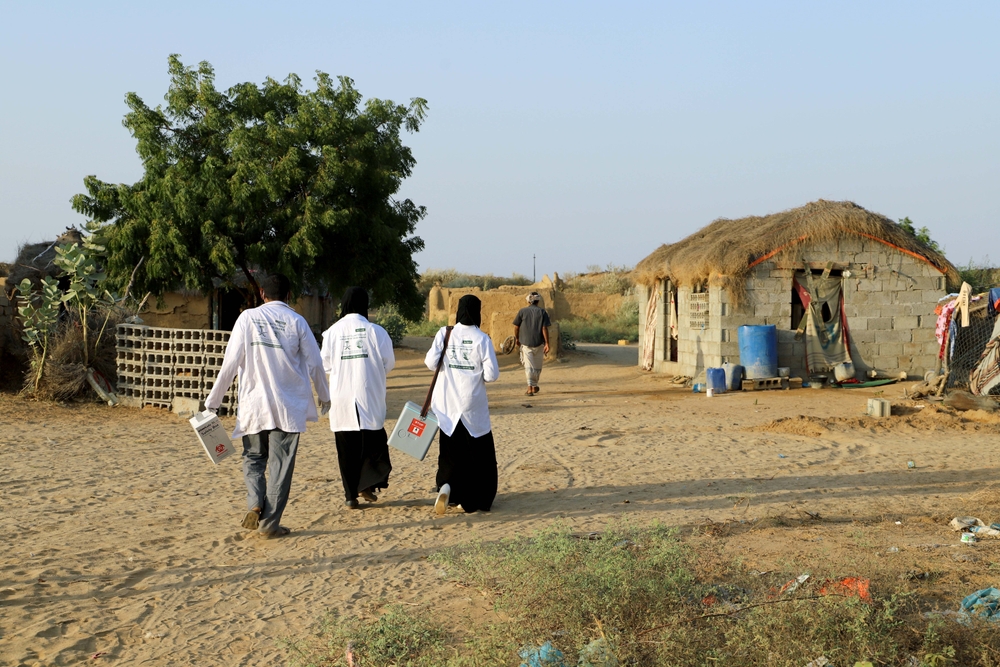June 24, 2024

Barriers and pathways for environmental surveillance of antibiotic resistance
OHT’s Ramanan Laxminarayan co-authored a qualitative, exploratory study that identified infrastructural, institutional, and sociocultural barriers to implementing environmental surveillance of antibiotic resistance in low- and middle-income countries. Key informants reported various pathways to mitigate these barriers, some of which raised concerns about research and knowledge gaps due to the perceived inevitability of conflict, disagreement, or unavailability of resources in certain countries or regions. International agencies and the research community are equally important in helping to mitigate some of the barriers to actionable surveillance in lower-resource settings. [Global Health Action]
Using a participatory approach to operationalize One Health anthrax surveillance
A participatory stakeholder workshop defined the steps to collectively shift Burkina Faso’s siloed anthrax surveillance system towards an intersectoral One Health approach. The workshop was modeled on a four-step framework: 1) defining the ideal situation or vision of the future; 2) characterizing the current situation; 3) identifying changes to achieve the ideal situation; and 4) drafting an action plan to operationalize the changes. [PLOS One]
High AMR prevalence in MRSA-positive livestock cows in Nigeria
A longitudinal study found that over 60 percent of methicillin-resistant Staphylococcus aureus (MRSA) isolates collected from livestock cows in Edo State, Nigeria exhibited multidrug resistance. Several antimicrobial resistance genes (such as tetM and mecC) and genes associated with biofilm formation (a key virulence factor) were present in these isolates, highlighting the substantial prevalence of antimicrobial resistance in livestock-associated MRSA and reflecting the excessive use of antibiotics in livestock in the study area. [Nature Scientific Reports]
Antibiotics are overprescribed to pregnant women with suspected UTIs in Beirut.
Findings from a prospective, cross-sectional study in a sexual reproductive health clinic in Beirut, Lebanon revealed that a high proportion of pregnant women with suspected urinary tract infection (UTI) receive unnecessary antibiotic prescriptions. Prescribing antibiotics based on urine dipstick test results alone, a routine practice in the clinic studied, resulted in an overprescription rate of 82 percent. In contrast, diagnosis based on positive urine culture results and UTI symptoms resulted in an over–prescription rate of 39.1 percent. The study also considered the affordable cost of urine culture testing (0.48 Euro per patient), which would substantially reduce unnecessary antibiotic prescriptions. [World Health Organization]
Environmental management of proposed agricultural sites to mitigate disease risk
Expanding irrigated agriculture is critical to meet the world’s growing food production demands but could alter aquatic environments and subsequently impact the spatiotemporal distribution of disease vectors. A modeling study predicted the malaria risk associated with each proposed site expansion in Malawi. The analysis showed that high–risk malaria areas would increase from 8.60 percent to 15.16 percent in the rainy season and from 1.78 percent to 2.17 percent in the dry season. Environmental management of the sites with the highest associated risk through irrigation scheduling, engineering, and maintenance can help preserve crop production while mitigating the risk of malaria transmission. [Journal of Environmental Management]
Diverse microbiomes can defend against invading antibiotic resistance genes.
An analysis of soil samples collected from seven European countries showed that the diversity and stability of an environmental microbiome is inversely correlated with the ability of antimicrobial resistance genes (ARGs) to invade and establish themselves in particular environments. The inverse relationship between microbiome diversity and ARG abundance was only observed at statistically significant levels in relatively stable forest soil communities and not in highly dynamic river soil communities, possibly due to the transient availability of ecological niches in more dynamic and diverse environments. [Nature Communications Biology]
Range expansion of the Rift Valley fever virus in east Africa coincides with climate change.
A spatiotemporal modeling study of the Rift Valley fever (RVF) virus in east Africa revealed that rising temperatures and rainfall are associated with the increasing frequency of RVF clusters in the highlands of southwestern Uganda and Kenya. Notably, 35 percent of small RVF clusters (< 5 human cases and < 10 livestock cases) were identified in areas with no prior reports of RVF in Uganda and Kenya. The incidence of such clusters is expected to increase in the east African highlands as precipitation and annual temperatures predictably rise. [BMJ Global Health]
Prevalence of childhood diarrhea and associated water, sanitation, and hygiene factors
A cross-sectional study estimated the prevalence of diarrhea among children under five in Lira City, Uganda, at 26.4 percent. The prevalence of diarrheal disease was positively associated with the use of untreated drinking water (adjusted odds ratio = 1.84) and negatively associated with children between 49 and 60 months old (aOR= 0.11) and cleaning the latrine more than 7 times in a week (aOR = 0.42). As the population of Lira City grows, especially in its urban informal settlements, targeted water, sanitation, and hygiene interventions should prioritize reducing the diarrheal burden among under-five children. [PLOS One]
A call for AMR and schistosomiasis co-infection surveillance in west Africa
A narrative review explored the relationships between AMR, schistosomiasis, and microbes in low- and middle-income countries in Africa through a One Health lens. While the correlation between individual gut microbial diversity and risk of schistosomiasis infection is indeterminate, there is a need for AMR and schistosomiasis co-infection surveillance in lakeshore and riverine communities in west Africa, as demonstrated by the rising rates of extended-spectrum beta-lactamase (ESBL) producing Enterobacteriaceae and the schistosomiasis-causing parasite, Schistosoma mansoni, in Malawi and Senegal. [Transactions of The Royal Society of Tropical Medicine and Hygiene]
Image from Shutterstock











